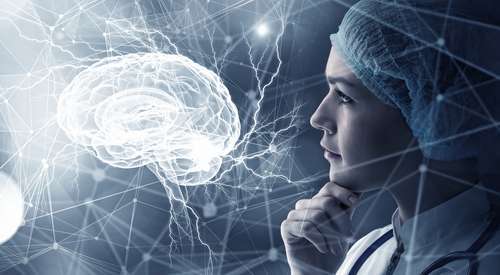Impulsivity is about sensation-seeking behaviour and a lack of conscious control over it, which has been linked to substance misuse. People who abuse drugs act impulsively and, as a consequence, their neuroanatomy is impacted.
Read on to learn more about the neuroscience of impulse and addiction and why it matters for people in recovery.
Brain Imaging
Every person has a level of impulsivity inside of their character. Some people are consistently acting on whims, whereas others rarely make decisions without deep consideration. Impulsivity can be a predictor for drug misuse.
Studies have shown adolescents who experiment with recreational drugs are more likely to have lower levels of self-control. Scientists also note subtle neuroanatomical changes in the brains of people who are, or have been, struggling with addiction.
Cause and Effects
Behaviour, genetics, and neuroanatomy have been thoroughly researched for the interplay between all three. Some people believe the brain structure lends itself to drug use while others think recreational drug use changes the brain’s structures. Drug abuse is known to affect brain anatomy but working out how much of that takes place after drug misuse takes hold requires having access to a comprehensive brain scan prior to addiction.
A recent study published in The Journal of Neuroscience exposes some interesting information about the natural impulsive character of a person and sensation-seeking behaviour. Questions on the survey of people in the study looked at desire for intense experiences along with any alcohol, caffeine, or tobacco use. MRI scans were done to chart aspects of the people’s neuroanatomy.
Brain Differences
The results of the scans from the MRIs showed people with a naturally impulsive character were more likely to have a thinner cortex (decreased gray matter) in brain regions associated with decision-making and self-control. The changes were marked in two areas of the brain considered important to emotional regulation and behavioural control. The middle frontal gyrus and anterior cingulate areas are two regions known to play a role in decision-making, empathy, and impulse control. The changes to the brain also correlated to the individual’s self-reported tendency to act on impulse which went hand in hand with an increase in alcohol, caffeine, and tobacco use.
Benefits of Knowledge
Learning how the neuroanatomy of the brain works provides several benefits. For example, individuals who are healthy can have impulse control problems and not suffer from addiction. Differences to brain anatomy are not necessarily linked to a history of drug misuse or mental illness.
The importance of interpersonal differences in neuroanatomy is still a new area of research which requires more focused attention. However, the potential influence on psychiatric well-being cannot be understated along with other health outcomes as a result of this information.
It is important not to let the idea that brains are impacted by addiction result in not making necessary changes because it is possible to overcome the neuroscience of addiction to the point of being able to fight through recovery and work at sobriety for the sake of a person’s health and well-being.
Castle Craig is here to support your recovery journey with our leading inpatient addiction rehab facility. We focus on your goals and needs with personalised programmes. Recovery is a journey that takes support and we will help. Call us at 01721 546 263 to find out more information.

